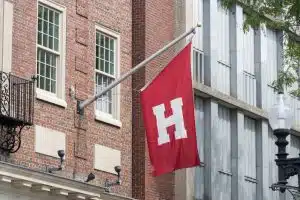Brown Waitlist Acceptance Rate
Getting onto a university’s waitlist can be a nerve-wracking experience, filled with uncertainty and anticipation. The waitlist acceptance rate is a factor that many aspiring students look at to estimate their chances of getting a positive decision. In this article, we’ll examine the waitlist acceptance rate of Brown University, providing in-depth analysis and advice for students on the waitlist.
Understanding the Concept of College Waitlists
Before diving into the specifics of Brown University, it’s essential to gain a broad understanding of college waitlists in general. Having this foundational knowledge will aid in fully comprehending the significance of waitlist acceptance rates.
College waitlists are a common occurrence in the admissions process of many universities. They serve as a safety measure to ensure that the institution has a full incoming class each year. When prospective students decline their admissions offers, universities turn to the waitlist to fill those vacancies.
It’s essentially a second chance for students who weren’t initially accepted but came close to the cut-off mark. Waitlists are carefully managed by universities to maintain a balance between the number of students admitted and their enrollment goals. Universities like Brown University consider various factors when making decisions about admitting students off the waitlist.
The Purpose of College Waitlists
Universities, like Brown, utilize waitlists as a safety measure to ensure that they have a full incoming class each year. When prospective students decline their admissions offers, universities turn to the waitlist to fill those vacancies. It’s essentially a second chance for students who weren’t initially accepted but came close to the cut-off mark.
Waitlists give universities the flexibility to manage their incoming class size and composition. By having a waitlist, they can account for uncertainties such as students who change their minds or fail to meet enrollment requirements. It allows universities to have a backup plan and ensure that they can meet their enrollment targets.
Furthermore, waitlists also benefit students who are on the list. It gives them hope and an opportunity to be admitted to their desired university. It’s a chance for them to showcase their continued interest and commitment to the institution.
Factors Influencing Waitlist Decisions
Several factors can influence a university’s decision to admit students off the waitlist. Such factors may include the number of accepted students who decline their offers, university-specific enrollment goals, and overall application pool strength. The balance between these factors can greatly influence the final number of students admitted off the waitlist.
One significant factor is the number of accepted students who decline their offers. If a large number of admitted students decide to attend other universities, it increases the chances of waitlisted students being admitted. On the other hand, if the acceptance rate is high and most admitted students accept their offers, there may be limited spots available for waitlisted students.
University-specific enrollment goals also play a crucial role in waitlist decisions. Each university has a target number of students they aim to enroll. If they have already met their goals through regular admissions, they may admit fewer students from the waitlist. However, if they are still short of their target, they may admit more students from the waitlist to fill the remaining spots.
Additionally, the overall strength of the application pool can impact waitlist decisions. If the pool is exceptionally competitive, universities may be more inclined to admit students from the waitlist who demonstrate exceptional qualifications and potential. Conversely, if the application pool is weaker than expected, universities may admit fewer students from the waitlist.
It’s important to note that waitlist decisions can vary from year to year and from university to university. Each institution has its own unique approach and criteria for admitting students off the waitlist.
An Overview of Brown University’s Admissions
Comprehending Brown University’s general admissions process and policies can provide some context for understanding its waitlist acceptance rate. Let’s explore this in further detail.
Brown University, located in Providence, Rhode Island, is a prestigious institution known for its rigorous academics and vibrant campus life. Established in 1764, it is the seventh-oldest college in the United States and a member of the esteemed Ivy League. With a rich history and a commitment to intellectual curiosity, Brown attracts top-tier students from around the world.
When it comes to admissions, Brown University is highly selective. As an Ivy League school, it consistently ranks among the most competitive universities in the United States. With a general acceptance rate of just above 7%, achieving admission to Brown is no small feat. The university carefully evaluates each applicant’s academic achievements, extracurricular involvement, personal essays, and recommendations to ensure that admitted students are not only academically capable but also possess a diverse range of talents and perspectives.
Brown University’s General Acceptance Rate
Brown University’s low acceptance rate reflects the high level of competition among applicants. The university receives a large number of applications each year, far exceeding the number of available spots in the freshman class. This selectivity ensures that the student body is comprised of individuals who will thrive in Brown’s intellectually stimulating environment.
Despite the challenging admissions process, Brown University remains committed to providing access to education for students from all backgrounds. The university actively seeks to enroll a diverse student body, including individuals from underrepresented communities, first-generation college students, and those with exceptional talents or achievements.
Accepted students at Brown University can expect to join a community of scholars who are passionate about learning, research, and making a positive impact on the world. The university offers a wide range of academic programs, including over 80 concentrations, allowing students to tailor their education to their interests and career goals.
The Role of Early Decision in Brown’s Admissions
Brown University offers an Early Decision program, which allows students to apply in advance and receive an admission decision earlier than in the regular decision process. This program is designed for students who have identified Brown as their top choice and are committed to attending if accepted.
Applying through Early Decision can be advantageous for students who are confident in their desire to attend Brown. The acceptance rate for Early Decision applicants is typically higher than the overall acceptance rate, as the university values the demonstrated interest and commitment of these students. However, it is important to note that Early Decision is a binding agreement, meaning that if accepted, the student is obligated to enroll at Brown and withdraw all other college applications.
Candidates admitted through the Early Decision process are expected to attend, contributing to the final enrollment figures and affecting the number of available spaces for waitlisted students. This is an important factor to consider when analyzing the waitlist acceptance rate at Brown University.
In conclusion, Brown University’s admissions process is highly competitive, with a low acceptance rate that reflects the university’s commitment to academic excellence and diversity. The Early Decision program plays a significant role in shaping the admissions landscape, impacting the number of available spots for waitlisted students. Aspiring applicants should carefully consider their options and put forth their best efforts in order to increase their chances of securing a spot at this prestigious institution.
The Specifics of Brown University’s Waitlist
Moving on to the specifics of Brown University’s waitlist, we’ll examine how many students are typically waitlisted and the usual timeline for waitlist decisions.
But before we dive into the details, let’s take a moment to understand what a waitlist is and how it works. A waitlist is a list of students who have been deemed qualified for admission to a university but are not offered a spot in the incoming class immediately. Instead, they are placed on a waitlist and may be offered admission if spots become available due to students declining their offers or other unforeseen circumstances.
Now, let’s explore the specifics of Brown University’s waitlist.
How Many Students are Typically Waitlisted?
Brown University, like many other Ivy League schools, does not disclose specific numbers of students on its waitlist. However, it’s estimated that hundreds to even thousands may find themselves on the waitlist every year, depending upon the applicant pool’s strength and size.
Being placed on a waitlist can be both exciting and nerve-wracking for students. It’s a sign that the university recognizes their potential but is unable to offer them a spot in the incoming class immediately. Students on the waitlist often wonder about their chances of eventually being admitted and eagerly await updates from the university.
The Timeline for Waitlist Decisions at Brown
Brown University typically starts to extend offers to waitlisted students around mid-May, once the university has a clear picture of the number of accepted students intending to enroll. This process may extend into the summer months, subject to space availability in the incoming class.
During this time, the admissions committee carefully reviews the waitlisted applicants, considering factors such as their academic achievements, extracurricular involvement, and potential contributions to the university community. It’s important to note that being on the waitlist does not guarantee admission, as the number of available spots is limited.
For students on the waitlist, this period can be filled with anticipation and uncertainty. They may receive periodic updates from the university, informing them of any changes in their admission status or providing additional information about the waitlist process. It’s crucial for waitlisted students to remain proactive and keep the university informed of any significant updates or achievements that may strengthen their candidacy.
As the summer progresses, the admissions committee continues to assess the waitlisted applicants and make final decisions based on the evolving circumstances. It’s important for students to keep in mind that the waitlist process is dynamic, and spots may become available at any time. Therefore, it’s essential to remain patient and maintain a positive outlook while waiting for a final decision.
In conclusion, the waitlist process at Brown University is both complex and unpredictable. The number of students waitlisted can vary greatly each year, and the timeline for waitlist decisions extends from mid-May into the summer months. Students on the waitlist should stay engaged with the university, provide any necessary updates, and remain hopeful for a potential offer of admission.
Brown University’s Waitlist Acceptance Rate
With the general context and specifics of the waitlist procedure, we can now focus on the main question: What is the Brown University waitlist acceptance rate?
Before delving into the specifics of the waitlist acceptance rate at Brown University, it is important to understand how this rate is calculated. The waitlist acceptance rate is the percentage of students who are offered admission from the waitlist. This rate is determined by dividing the number of waitlisted students who received and accepted an offer by the total number of students who were placed on the waitlist.
How the Waitlist Acceptance Rate is Calculated
The waitlist acceptance rate serves as an important indicator of the likelihood of being admitted from the waitlist. It is a crucial statistic for students who find themselves in this uncertain position. By understanding how this rate is calculated, students can gain insight into their chances of being accepted.
At Brown University, the waitlist acceptance rate is determined by dividing the number of students who were offered admission from the waitlist and subsequently accepted the offer by the total number of students who were placed on the waitlist. This calculation provides a clear representation of the proportion of students who successfully transition from the waitlist to becoming enrolled students at Brown.
Yearly Trends in Brown’s Waitlist Acceptance Rate
When considering the waitlist acceptance rate at Brown University, it is important to note that this rate can vary significantly from year to year. In some years, Brown has accepted a significant number of students from the waitlist, providing hope and opportunity for those who were initially not offered admission. However, in other years, the number of students accepted from the waitlist has been relatively low.
This variability in its waitlist acceptance rate highlights the unpredictable nature of the Brown University waitlist process, particularly in highly competitive universities like Brown. The admissions committee carefully evaluates the needs of the incoming class, the number of students who have accepted their initial offers of admission, and other factors that may influence the number of students admitted from the waitlist. As a result, the waitlist acceptance rate can fluctuate from year to year, making it difficult to predict the outcome for students on the waitlist.
Despite the uncertainty surrounding the waitlist acceptance rate, it is important for students to remain hopeful and proactive. While the waitlist can be an anxiety-inducing situation, it is crucial for students to continue pursuing their academic and extracurricular interests, as well as exploring other college options. By staying engaged and demonstrating continued interest in Brown University, students can maximize their chances of being admitted from the waitlist.
Strategies for Students on Brown’s Waitlist
Now, it’s time to cover the final aspect of our analysis, which focuses on actionable strategies for students who find themselves on Brown University’s waitlist.
How to Communicate Continued Interest
An important strategy for waitlisted students is to communicate their continued interest in the university. This can be done by sending a letter to the admissions committee, reaffirming their intention to attend if offered admission, and updating them about any significant academic achievements or extracurricular milestones since their initial application.
The Impact of Additional Academic Achievements
Improving one’s academic profile can potentially influence their chances of being admitted from the waitlist. This could include obtaining higher SAT scores, improving your GPA, or achieving significant accomplishments in your academic or creative pursuits.
Overall, being on Brown University’s waitlist requires patience and perseverance. While the waitlist acceptance rate can seem daunting, with a solid strategy, hopeful students can increase their chances of transforming from waitlisted to admitted.








































